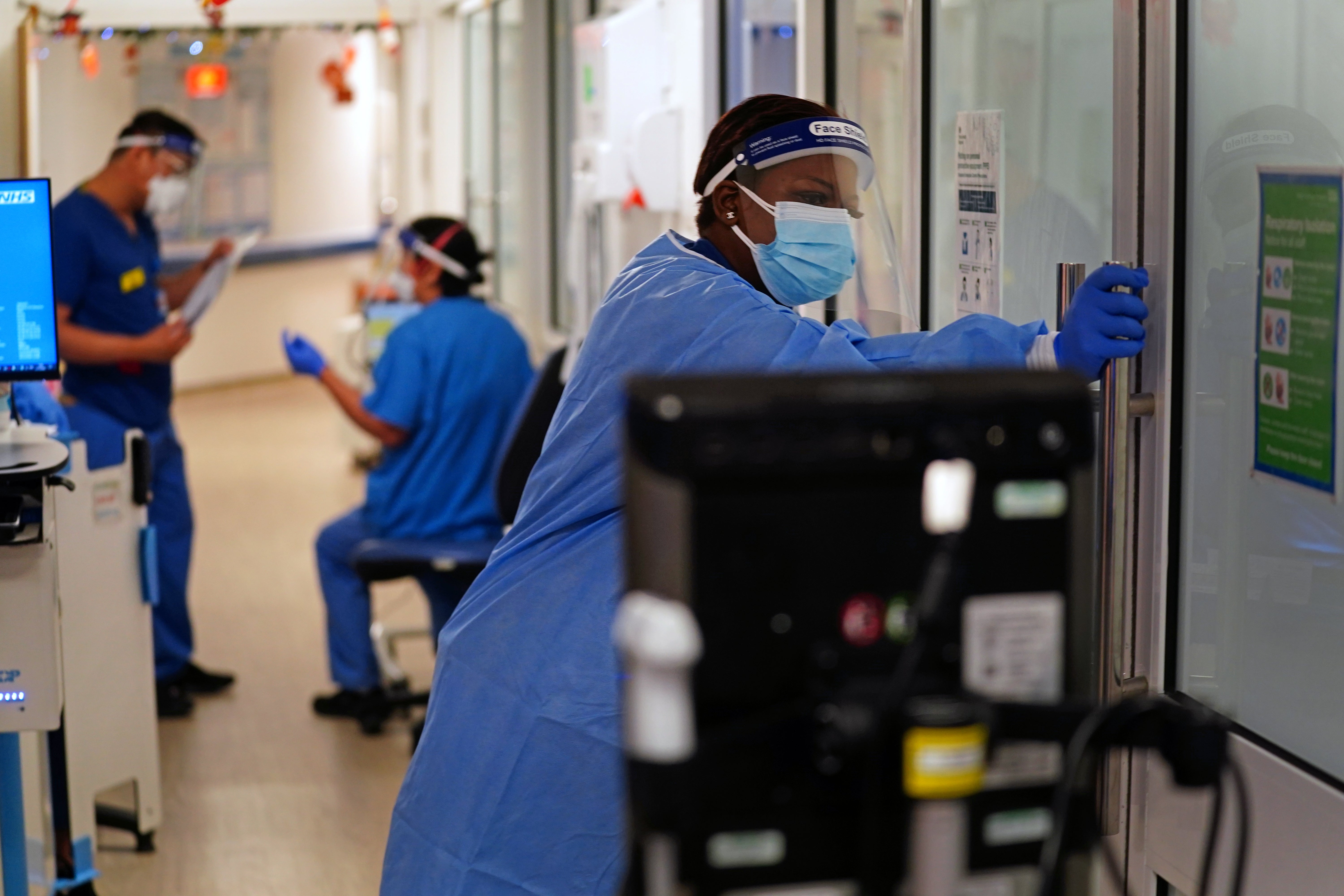Hospital staff absences due to Covid-19 jump to highest level for a month
It is the latest sign that the prevalence of Covid-19 is growing once again.

Your support helps us to tell the story
From reproductive rights to climate change to Big Tech, The Independent is on the ground when the story is developing. Whether it's investigating the financials of Elon Musk's pro-Trump PAC or producing our latest documentary, 'The A Word', which shines a light on the American women fighting for reproductive rights, we know how important it is to parse out the facts from the messaging.
At such a critical moment in US history, we need reporters on the ground. Your donation allows us to keep sending journalists to speak to both sides of the story.
The Independent is trusted by Americans across the entire political spectrum. And unlike many other quality news outlets, we choose not to lock Americans out of our reporting and analysis with paywalls. We believe quality journalism should be available to everyone, paid for by those who can afford it.
Your support makes all the difference.Staff absences at NHS hospitals in England due to Covid-19 have jumped to their highest level for a month, with numbers climbing in all regions, new figures show.
It comes as Covid patient levels continue to rise across the country – though more than half of people in hospital with coronavirus are still being treated primarily for something else.
An average of 17,579 staff at hospital trusts in England – 2% of the total workforce – were absent each day last week, either because they were sick with Covid-19 or were self-isolating.
The figure is up 19% on the previous week, and is the highest since 21,325 absences in the week to February 13.
But it is still below the level reached at the peak of the Omicron wave in early January, when absences due to Covid-19 averaged nearly 46,000.
All regions have seen a week-on-week increase in Covid absences, with south-west England recording the biggest rise (32%), followed by eastern England (30%) and south-east England (25%).
The figures, from NHS England, are the latest sign that coronavirus is becoming more prevalent again, after a period of falling infections in late January and February.
The rise in NHS staff absences due to Covid-19 is clear evidence that while ministers may have decided the pandemic is over, nursing staff are still working through pandemic conditions
Dr Layla McCay, director of policy at the NHS Confederation, which represents organisations providing NHS services, described the numbers as “concerning” and warned that if absences continue to increase it could hamper efforts to clear the backlog of people waiting for treatment.
“Any rise in Covid-related staff absences also serves to compound existing pressures on the NHS, which is carrying 110,000 vacancies. We now urgently need to see a long-term fully costed workforce plan from government,” she added.
Patricia Marquis, Royal College of Nursing director for England, said: “The rise in NHS staff absences due to Covid-19 is clear evidence that while ministers may have decided the pandemic is over, nursing staff are still working through pandemic conditions.
“Staff must continue to have access to free testing and high-quality PPE wherever they work, for their protection and that of their patients. As Covid cases in the community continue to rise, this is a clear reminder of the need to continue to take the virus seriously.”
Health Secretary Sajid Javid said this week that a rise in infections was to be “expected” following the easing of Covid-19 restrictions in England.
“We are now open as a country and there’s more social mixing, but there’s nothing in the data at this point in time that gives us any cause for concern,” he told Sky News on Monday.
The number of people in hospital with Covid-19 in England stood at 11,010 on March 16, up 20% week-on-week and the highest since February 9.
Patient levels in England are still some way below the peak reached at the start of this year during the Omicron wave (17,120) and well below the peak of the second wave in January 2021 (34,336).
The number of patients with symptoms serious enough to be placed in mechanical ventilation beds also remains low.
A total of 236 people were in ventilator beds in hospitals in England on March 16, broadly unchanged from the previous week and far below the 797 recorded at the peak of the Omicron wave – and the 3,736 at the second-wave peak in January 2021.
Separate figures published on Thursday show that just over half of all Covid-19 patients in hospital trusts in England are being treated primarily for something else, up from a quarter in autumn 2021.
All patients who have tested positive for Covid-19 need to be treated separately from those who do not have the virus, regardless of whether they are in hospital primarily for Covid or not.
But the growing proportion of patients who are in hospital “with” Covid-19 rather than “for” Covid-19 – 56% as of March 15 – is another sign that the current wave of the virus has not led to the same sort of pressure on critical care as in previous waves.